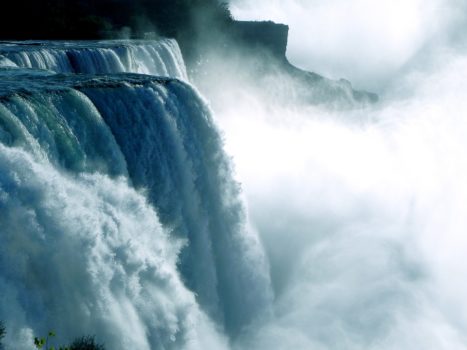Do Go Chasing Waterfalls – As Long As They're Automated
by Lindsay Rowntree on 5th Sep 2016 in News

The waterfall is a dependable, yet seemingly outdated, technique allowing publishers to optimise their yield. But the waterfall isn't dead yet: according to Alex Bornyakov (pictured below), CEO, VertaMedia, it needs to become automated to maintain its relevance. Writing exclusively for ExchangeWire, Bornyakov explains, when it comes to video advertising, waterfalls are an important and ever-present part of the buying and selling process and the automation of them will help to iron out the negatives.
Waterfalls aren’t currently the most fashionable model in ad tech with ‘end of the waterfall’ and ‘moving past the waterfall’ headlines suggesting the process is rapidly becoming outdated.
But the fact remains that the whole industry is still using them.
In the digital video advertising industry, direct deals remain the most efficient monetisation strategy for publishers, yet non-guaranteed, tag-based demand still holds a significant percentage of the US market. A waterfall approach allows direct, guaranteed campaigns to be placed at the top – with highest priority – and then tag-based demand to be placed further down the waterfall in order of perceived value, to meet fill rates where there is insufficient direct demand. But many of the problems facing waterfalls are that they are generated and updated manually by ad ops.
And, although waterfalls have long been a feature of digital ad trading, and are designed to allow the publisher to gain maximum yield for each impression, they are fast falling out of favour. However, I think we can make waterfalls perform better, but only if we automate. Here’s why publishers should consider making that switch:
The drawbacks of manual waterfalls

Alex Bornyakov, CEO, VertaMedia
A manually generated and managed waterfall is more efficient than no waterfall at all; but it does have a number of drawbacks, with latency being the most widely publicised. In a bid to save ad opportunities and meet fill rates more and more, tags are being added to the waterfall. Subsequently, if the opportunity can’t be filled immediately and begins to fall down the waterfall, it can take a long time for an ad to be served – possibly up to 30 seconds.
Other downsides of manual waterfalls are that ad ops can only fix a problem once it has occurred, as they depend on retrospective analysis. With no real-time data, they are slow to react to traffic changes. Manual waterfalls rely on humans who are prone to mistakes and are costly to employ, especially in an industry that is seeing such rapid growth. Finally, building manual waterfalls at domain-level is virtually impossible, due to the sheer volume of websites involved.
Automating the waterfall avoids these pitfalls
The process of building and managing the waterfall can now be automated using extensive data from multiple campaigns, including traffic specifics and campaign results such as errors, latency issues, and fill rates.
Real-time programmatic data, combined with historical data, can be used to map potential demand and create the waterfall at domain-level, maximising every ad opportunity. Automating these processes also frees up ad ops to spend more time on optimising yield and increasing efficiency, and provides the opportunity for them to switch from retrospective to prescriptive analysis.
Automating the waterfall resolves many of the issues experienced with manual waterfalls. It enables ad ops to build a waterfall for each individual domain and to create domain source targeting automatically. Specific settings for each domain, such as time limits and maximum number of demand sources, can be employed to solve issues such as latency, tag error, and spoiled opportunities.
Automation considers all demand and supply details in real time and waterfalls can be changed as frequently as necessary – every minute, every hour, every month – to intelligently optimise yields. It also provides unique insight for complex inventory optimisation requirements. The human element is reduced, limiting the potential for error and ensuring the business can grow without incurring additional human capital costs.
Despite ongoing speculation into their permanency, waterfalls are still very much part of the digital video advertising buying and selling process, and will continue to be a logical way for publishers to maximise yields for the foreseeable future.
But, before you go chasing waterfalls, do yourself and favour and make sure they’re the automated kind.
North AmericaProgrammaticPublisherSupply SideVideo








Follow ExchangeWire